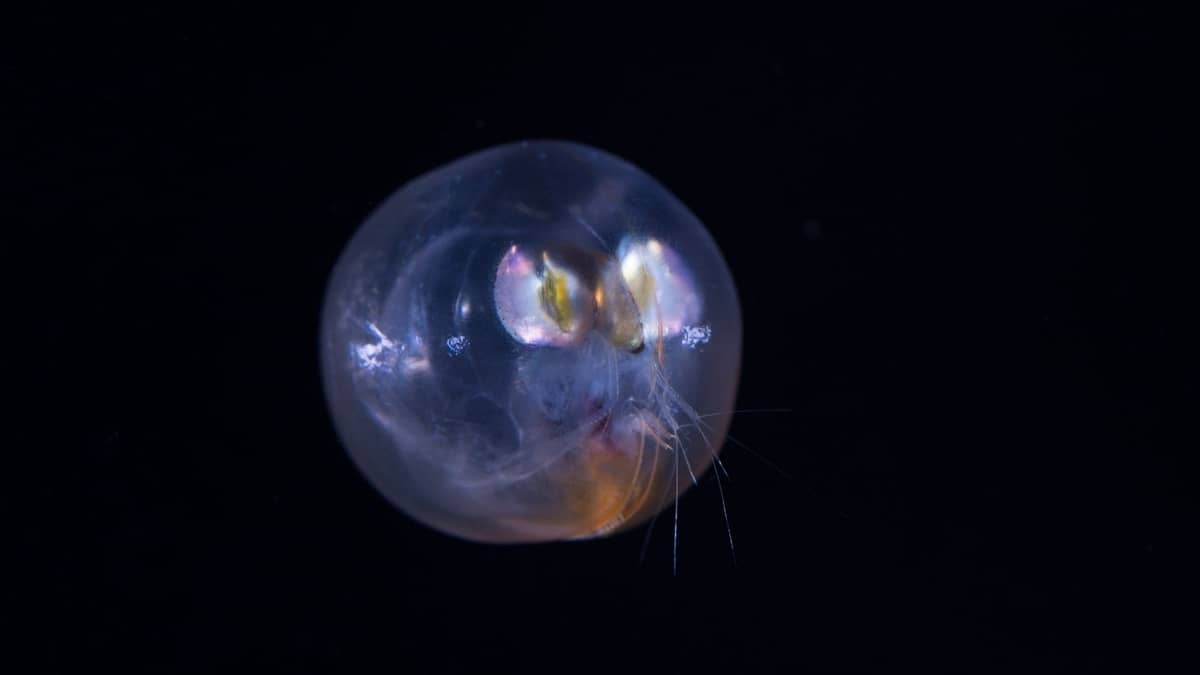Last Updated on December 7, 2021 by Marco C.
Ostracods are a very old species of aquatic animals. If you want to raise them properly read this article to know what ostracods do eat and what they do not eat.
An Ostracod is a type of crustacean, more commonly known as a seed shrimp. The crustacean family includes species such as lobster, crab, and crayfish.
You can find ostracods in almost all bodies of water around the world! If done right, ostracods can be very useful for your tank system. They are especially good at keeping your tank clean.
Since ostracods are very small, they act as great food for larger species in your tank ecosystem. If you are interested in introducing this species into your aquaponics system, read on to find out everything you need to know about what do ostracods eat and other key details.
Putting Ostracods In A Fish Tank
Before getting started, let’s make sure we have a clear idea of what Ostracods are. Seed shrimps are often confused with scuds. Scuds have more of a shrimp shape while ostracods look like seeds.
Learn more about: The Magic Of What Shrimps Eat In A Fish Tank!
Although, it may be hard to see the difference in a tank because both of these creatures are so small. You can look carefully to observe the swimming patterns in order to determine which one is which.
Ostracods will grow from between 1mm to 2 cm max. A 2-centimeter ostracod is considered very large. More commonly, you will find them being about 1mm-2mm.
The amazing thing about ostracods is that they can live in tropical water systems, fresh water, and very cold water. It is one of the only species that can be found in the Caribbean islands and the polar arctic!
This means that if you want to raise ostracods, you have a high chance of success. They have evolved and adapted over millions of years, which has made them a resilient species.
One of the adaptations is that ostracods are able to sense other fish and go into hiding when predators are near. This protects them from getting eaten.
According to the University of Florida, Ostracods can produce sexually and asexually. This means that certain female species can produce an egg all alone. Eggs are laid either on the surface of the water or on top of aquatic plants.
Certain species produce a liquid membrane that coats the eggs in order to protect it. This membrane is especially useful when there is not enough moisture in the air.
As mentioned before there are thousands of species of seed shrimp. Often these species are able to move into different environments and survive. This means that a tropical ostracod could survive in a hot spring river or an arctic environment.
For the most part, they all require similar conditions for survival. Let’s discuss their specific diets now.
Best Ostracod Diet
In nature, ostracods will eat many things that they can find. They are considered to be omnivores and scavengers. Don’t forget about the microscopic size of ostracods.
Since they are so small, they only eat things smaller than them. This means they are eating very small organisms. Some of these include algae, mold, bacterias, and other organic debris that may be present in their water.
If you want to keep your tank clean, you can consider putting some ostracods in there. Any excess food that your fish don’t eat will be consumed by the seed shrimp. If you have a functioning ecosystem you most likely will not have to provide extra food for your ostracods.
They will eat whatever is available in your tank. This is another reason ostracods are easy to raise.
Of course, because they are so small, they are also easy to get eaten. But some seed shrimp are so resilient that they will survive and pass through a fish’s digestive tract!
In order to locate food, they use their antennae to touch their surroundings. This indicates what is available and what to avoid. They also use the tiny hairs on their body to feel around.
Many ostracod species do not have eyes. One of the only ones that do have a small eye is called the Nauplius Ostracod.
Certain saltwater varieties are also bioluminescent. This is a wonderful phenomenon in nature where aquatic animals produce a bright light when touched. It creates a remarkable blue light in the water and sand at night!
Appreciating The Amazing Ostracod
The ancient seed shrimp is one of the most commonly found species all around the world. It is quite incredible that they can survive in such a diverse range of climates.
They have been around for over 443 million years! Scientists have found their imprints in fossilized tree sap. Any species that can survive that long, is very strong.
You can use ostracods as a supplement in your fish tank to help keep your system clean and also provide extra sources of protein for some of your omnivorous fish.
Ostracods breed very fast so be careful. You do not want your tank to get overrun by seed shrimp. In fact, in some areas, they have rules to prevent the overpopulation of ostracods.
They tell people to bleach their sinks before dumping water down the drain in case there may be ostracod larvae in the water.
This prolific species is something to marvel at. If you want to raise them, you don’t need to provide extra food. Now you know what ostracods do eat!
Hopefully, this will provide you with enough base information to go into this journey with confidence. There are at least 50,000 different types of this amazing creature. Make sure you find out the specific one from wherever you buy your seed shrimps.
This detail will help guide you in taking care and breeding them in the exact way that is needed. If you didn’t know about ostracods before you should leave this article as an expert! As with any aquaponics decision, do research and make your plan ahead of time before making any purchases. Good luck!
Feel free to ask questions and comment below.

Candace is an aquaponics expert with over 5 years of experience in the field. She has a degree in environmental science from the University of California, Berkeley and a degree in aquaponics from the University of Florida. She is passionate about sustainable agriculture and has a deep knowledge of aquaculture and hydroponics. She has worked on numerous projects and has been involved in the development of aquaponic systems and fish farms. She also has experience in designing and constructing aquaponic systems. With her expertise, Candace is able to advise clients on the most effective and efficient way to construct and manage their aquaponic system. She is an active member of the aquaponic community, often speaking at conferences and seminars. Candace is dedicated to helping others understand the importance of aquaponics, and she is a strong advocate for sustainable food production.



